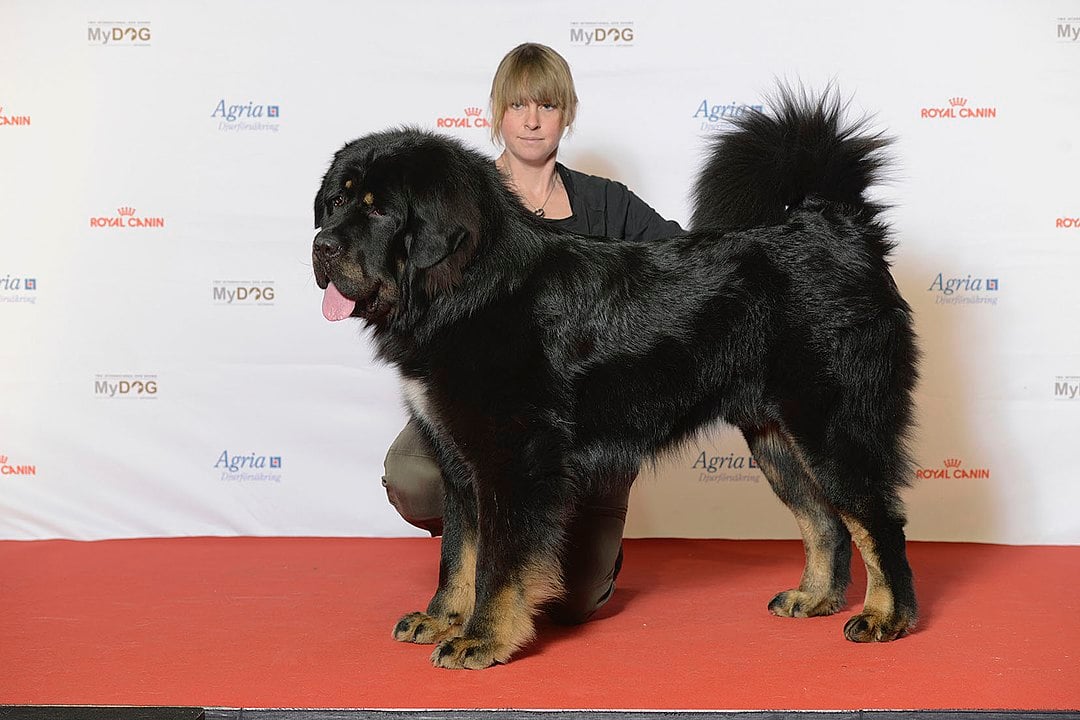If you’re thinking about getting a fluffy giant, this Tibetan Mastiff breed profile is a great place to start. Tibetan Mastiffs are actually mountain dog breeds rather than Mastiffs, but the moniker has stuck since it was raised as a flock guardian in the Himalayas. They are a somewhat rare breed that first competed in the Westminster Kennel Club Dog Show in 2008.
Tibetan Mastiffs are adapted to high altitudes, and their thick coats keep them warm in snow and other severe weather. They are strong workers and family defenders that will safeguard you and your children, but they may be a little stubborn!
Details about Tibetan Mastiff
- Large dog breeds with short legs and a long body include Tibetan Mastiffs. They are 20 inches tall and between 100 and 150 pounds in weight. They are protected from the cold by an outer coat that is dense, thick, and curly.
- Their coats are available in a variety of hues, such as black, brown, multicolor, white, and cream.
- Tibetan Mastiffs have a double coat made up of a soft undercoat and a hard topcoat in addition to having a wooly coat type. They can stay dry while outside thanks to this kind of clothing, which also keeps them warm. Due to their size and active lifestyle, the Tibetan Mastiff breed needs regular exercise.
- They are highly intelligent and trainable dogs.
- They belong to a breed that has a reputation for getting along well with children and other animals as well as for making great watchdogs and family members. Can they, however, be regarded as hypoallergenic?
What Size Does Tibetan Mastiff Get?
A male Tibetan Mastiff stands at least 26 inches tall and weighs 100 to 160 pounds or more; females stand at least 24 inches tall and weigh 75 to 125 pounds or more.
Is the Tibetan Mastiff Breed High Maintenance?
The Tibetan Mastiff is a large breed that requires very light grooming. The double coat is kept all year and sheds once a year in the spring or summer. They must be brushed every day for at least 30 minutes throughout the shedding season to eliminate all of the dead hair. Brushing on a regular basis will help to reduce the quantity of mats on the thick coat. If necessary, bathing your dog can be limited to every few months. This breed is not hypoallergenic and is not advised for allergy-prone owners. To avoid junk collection, the large ears should be cleansed and cleaned monthly. They have no discernible odor, but a scent may develop near the mouth owing to drool; consequently, it is critical to wipe the drool periodically to prevent bacteria formation. This friendly dog has a modest amount of energy and should be exercised on a regular basis. They are an independent and intelligent breed that enjoys staying active. Due to their huge build and proclivity to dig and climb, this dog is not suited to apartment living. This gentle giant would thrive in a spacious environment with plenty of space for running around outside. They enjoy walks but would not be a good jogging buddy.
Are Tibetan Mastiffs easy to train?
Tibetan Mastiffs can be challenging to train, particularly for inexperienced dog owners. They are extremely intelligent and learn rapidly, yet they may be extremely stubborn and prefer instincts above teaching instructions.
Because they aren’t especially motivated by food, standard reward training won’t work for them. They are also notorious for performing admirably in training class and then conveniently forgetting their directions when they return home. Tibetan Mastiffs do not have a dependable recall and should not be trusted off-leash.
What do Tibetan Mastiffs eat?
Because Tibetan Mastiffs are enormous, they require enough calories to keep healthy but not so much that they become overweight. Adult Tibetan Mastiffs consume two to four cups of food per day, which is less than you’d anticipate for their size. Despite their enormous size, Tibetan Mastiffs are known to skip meals since they only eat when they are hungry.
Tibetan Mastiffs, like any other dog breed, should be fed high-quality dog food that is appropriate for their age and weight. This implies puppy food when they’re puppies and adult food dependent on their weight as they develop.
You may be interested in: 6 Interesting Facts About Goldendoodles


